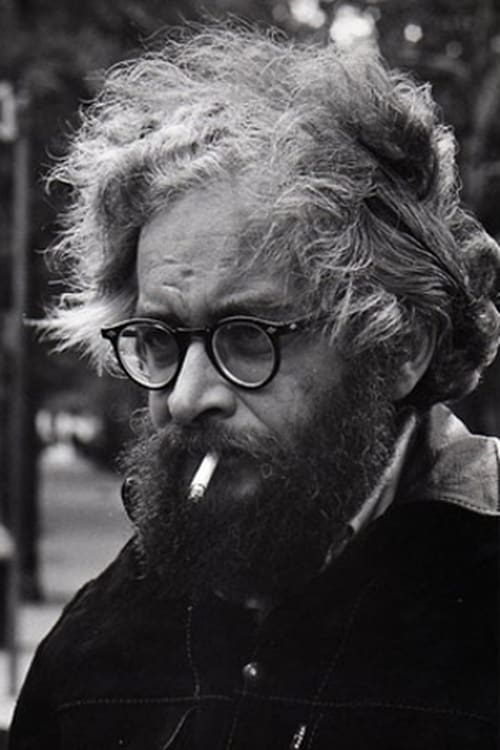No. 16: Oz: The Tin Woodman's Dream (1967)
ジャンル :
上映時間 : 15分
演出 : Harry Smith
シノプシス
The Tin Woodman, framed by light bulbs, does a little dance, leaps and retrieves his axe from outside the frame, chops down a tree that turns into various objects, grabs a heart emblem from the corner, and goes to the Emerald City at night with Toto. He goes to the edge of a cliff, where he meats an Asian spirit who gives him a heart shape that becomes a kite that hooks to him with a cane. This is followed by approximately ten minutes of kaleidoscopic images, including a man's hands, a dancing girl, and a cutout of Krishna. - IMDb

A look at the inner workings of a hospital.

The film begins with a series of horizontally running ocean tide waves, sometimes with mountains in the background, hand-painted patterns, sometimes step-printed hand-painting, abstractions composed of distorted (jammed) TV shapes in shades of blue with occasional red, refractions of light within the camera lens, sometimes mixed with reflections of water. Increasingly closer images of water, and of light reflected off water, as well as of bursts of fire, intersperse the long shots, the seascapes and all the other interwoven imagery. Eventually a distant volleyball arcs across the sky: this is closely followed by, and interspersed with, silhouettes of a young man and woman in the sea, which leads to some extremely out-of-focus images from a front car window, an opening between soft-focus trees, a clearing. Carved wooden teeth suddenly sweep across the frame. Then the film ends on some soft-focus horizon lines, foregrounded by ocean.

Shot in high-definition video using rear-screen process plates from classic Warner Bros. films noirs. A young man (in color) searches for his past through black-and-white scenes from "The Big Sleep," "Mildred Pierce," and "Strangers on a Train."

An industrial film which shows the operations inside the Philips Radio plant: In a mêlée of activity, glassblowers make delicate glass bulbs. Machinery assists the bulb manufacture. A virtuoso glassblower begins a more complex tube used in radio broadcasting; it is then turned, fired, and sculpted. Conveyors carry partially completed units. Workers perform their various specific assembly-line tasks. Cases are manufactured and machined, wire harnesses are assembled, loudspeakers are produced. As radios near completion, they are run through a series of tests. Engineers and draughtsmen define future developments. In a closing stop-motion sequence, in a style reminiscent of Norman McLaren, a group of loudspeakers performs a playful dance. The film overall is a poetic depiction of an industrial process.

A couple is conflicted when they are offered a chance at youth. Based on John Collier's short story “Youth from Vienna”.

An educational film from 1953 to encourage parents talk to their children about adolescence.

"Even when we know the game is an illusion, the experience of Bleu Shut is entirely a pleasure: the ‘game’ is fun, the Nelson/Wiley debates, infectiously funny; and Nelson’s choice of imagery, quirky and amusing. Bleu Shut reveals, and allows us to enjoy, our gullibility within the pervasive absurdity of modern life." –Scott MacDonald

A man tries different ways to open a Coca Cola bottle.

A short film from Tom Corboy about devoted fans of Elvis Presley in the years after his death.

This short follows Lennon and Ono as they take a hot-air balloon ride over snow-covered countryside.

Vacation in Sylt is a black and white compilation film about Heinz Reinefarth, a Nazi Party member, high SS police leader of Warthe, and later mayor (1951-1964) of Westerland/Sylt.

A Greek documentary by Takis Kanellopoulos about wedding traditions in western Greece and Macedonia. It was filmed in the village of Velvendo.

WWI comes to a small Serbian village of Kumodraz, disturbing its residents' quiet life.

This short film sees the thoughts and process of Claes Oldenburg come to life as he produced the soft kinetic sculptures from his ice bag series at Gemini GEL print studios.

A remake, in English of the German film Nicht löschbares Feuer (1969).

Directed by Mary J. Tsosie and Maxine Tsosie.

A formal 1861 portrait of a Chinese Mandarin and his wife is the starting point for this allegorical investigation of the fantasies spawned in the West about the East, particularly that which associates femininity with the mysterious Orient. ADYNATA presents a series of oppositions-male and female images, past and present sounds-which in and of themselves construct a minimal and fragmentary narrative, an open text of our imaginations, fears and fantasies.

This film documents the life of a family of brick makers in the outskirts of Bogotá, using the personal experience of the Castañeda family to expose the exploitation of manual laborers. Marta Rodríguez and Jorge Silva worked on this documentary from 1966 to 1972, establishing a relationship with the family which allows the viewer an intimate look at their hardships.

Simple objects, photographs, and events prompt Frank to self-conscious rumination. From his homes in New York and Nova Scotia and on visits to friends, the artist contemplates his relationships, the anniversary of his daughter's death, his son's mental illness, and his work.

Universal Hotel combines objective and subjective elements. In it, Thompson chronicles his research into experiments by Dr. Sigmund Rascher at Dachau in 1942, in which he nearly froze a Polish prisoner and then got a German prostitute to warm him up; Thompson uses photographs from archives in six countries and recounts a subjective dream set in what he calls the Universal Hotel.


